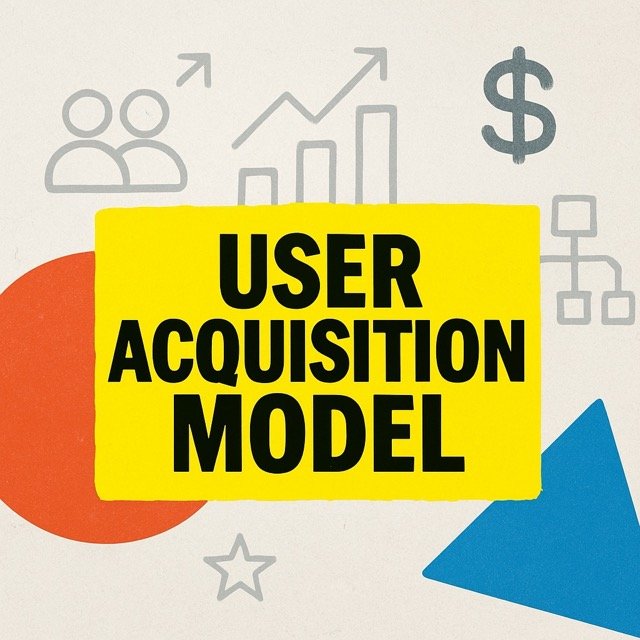Most App Founders Get User Acquisition Models Wrong...
Today’s Tip: If you want to scale your app sustainably, you need to define your User Acquisition Model from day one.
If you’ve studied startups, you’ve probably heard of “Product-Market Fit.”
This refers to the first key milestone for most startups — building something people actually want.
It sounds obvious, but many products fail because they burn through runway before finding PMF.
In the app world, growth works a little differently…
You need an engine that reliably turns strangers into users. That’s what your User Acquisition Model is.
Think of it like this:
Traffic Source Fit = where your potential users already spend time
Conversion Journey Fit = how well your funnel moves them from click to install to retained usage
Value Loop Fit = how strong your app’s early experience is at delivering value and keeping them coming back
I combine these into one core concept: User Acquisition Model Fit — how well your growth system turns qualified traffic into active, retained users.
If your goal is to scale without relying entirely on paid ads or luck, getting this model right early is essential.
After helping dozens of founders with launch strategy, I’ve realized the biggest mistake is starting without a clear user acquisition path.
They try a bit of everything — ads, influencers, App Store keywords — but without knowing which lever actually drives high-quality users.
I call this “activity without a model.”
You might see bursts of installs here and there, but no predictability, no compounding growth, no leverage.
That’s the danger of skipping the model work.
What you want instead is a repeatable user acquisition system.
Your User Acquisition Model should answer one key question:
What are the few scalable channels that bring in the right users who stick around?
Here’s how to build it:
Start by defining your Ideal User Profile (IUP) — the one type of user who benefits the most from your app
Reverse-engineer where they spend their time (platforms, communities, search queries)
Build or test 1–2 scalable channels (content, SEO, influencer collabs, paid search, etc.)
Refine your onboarding and activation flows to match the promise made in the acquisition channel
Repeat this process across 100–200 new users and measure actual retention, not just installs
Eventually, your model should be clear enough that it looks like this:
TikTok videos → App Store landing page → 7-day onboarding email drip → 40% D7 retention
If you can articulate this with numbers, not just intuition, you’re in a much better place than most indie founders or early-stage teams.
The earlier you define your model, the faster you'll grow — and the easier it is to raise capital, pitch partners, or scale revenue.
This is one of the most overlooked pieces of building a successful app.
Make sure you're not skipping it.
PS: If you want a breakdown of the most effective user acquisition model, book a FREE Zoom call with me.
People also read:
What Makes an App Successful or Is This the Most Important App-Building Insight I've Ever Learned
